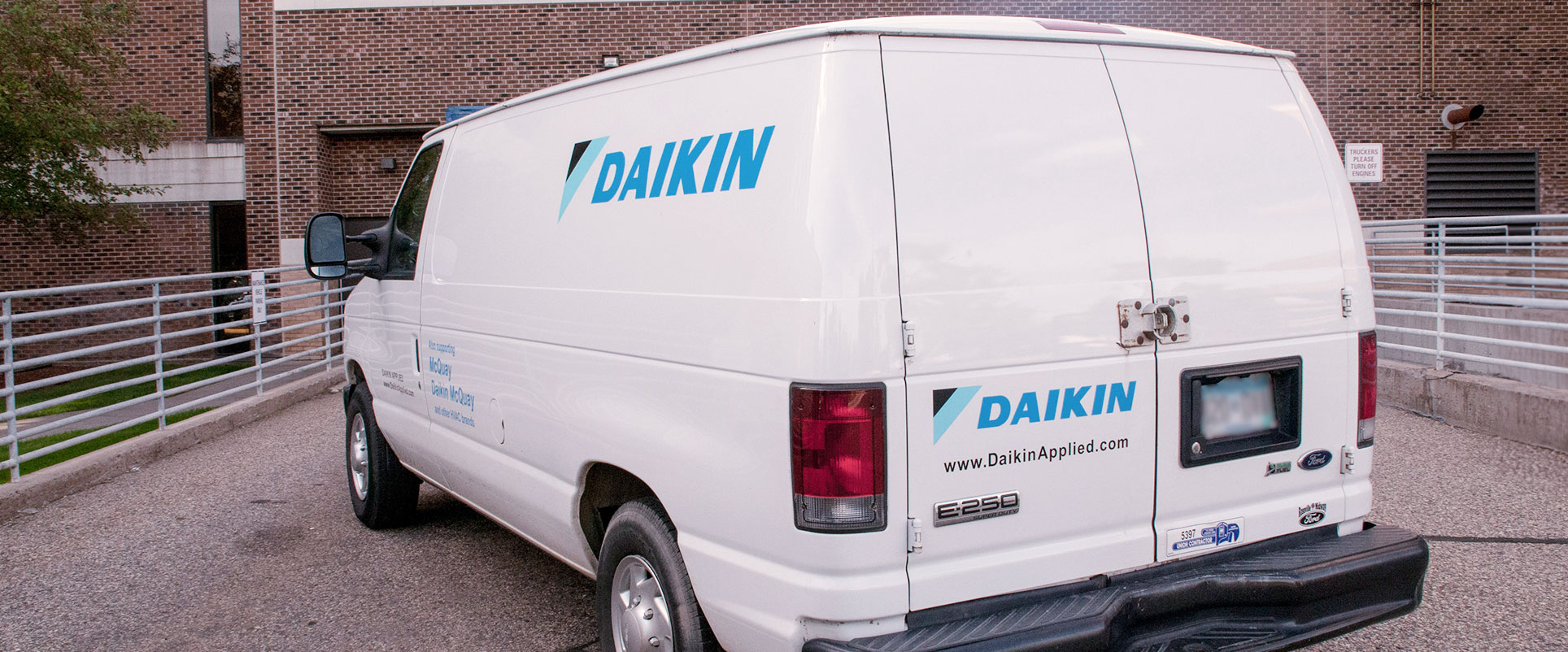Daikin Customer Service Phone Number Usa

One of the most frustrating experiences for homeowners is when their Daikin HVAC system suddenly stops producing cool air during the summer. You're expecting a refreshing blast of air, but instead, you're met with lukewarm air or, even worse, no air at all. Before you frantically search for the Daikin customer service phone number USA, let’s go through a systematic approach to diagnose and potentially resolve the issue yourself. This will not only save you time but could also save you money.
Troubleshooting Your Daikin AC: A Step-by-Step Guide
We'll break this down into manageable steps. Remember, safety is paramount. If at any point you feel uncomfortable or unsure, it’s always best to call a qualified HVAC technician.
Step 1: Basic Checks (No Tools Required)
These are the initial checks you can perform without needing any tools. These simple steps often uncover the most common, easily rectifiable problems.
Check the Thermostat:
- Ensure the Thermostat is On: This might seem obvious, but double-check that the thermostat is powered on and set to "Cool" mode.
- Set the Temperature Correctly: Make sure the desired temperature is lower than the current room temperature. A common mistake is setting it higher, expecting it to cool!
- Check the Fan Setting: Verify that the fan setting is on "Auto" or "On," not "Off." "Auto" allows the fan to run only when the AC is cooling, while "On" keeps the fan running continuously.
- Replace the Batteries (If Applicable): If your thermostat is battery-powered, replace the batteries with fresh ones. Low battery power can cause inaccurate readings or malfunctioning.
Inspect the Air Filter:
- Locate the Air Filter: The air filter is usually located in the indoor unit (the air handler), often in a slot on the unit itself or in the return air vent on the wall or ceiling.
- Check for Dirt and Debris: A clogged air filter is the most common reason for reduced airflow and cooling efficiency. If the filter is visibly dirty, it's time to replace it. A dirty filter restricts airflow, causing the AC unit to work harder and potentially overheat.
- Replace or Clean the Filter: Replace disposable filters with a new one of the same size and type. If you have a washable filter, clean it according to the manufacturer's instructions (usually with water and mild detergent), let it dry completely, and then reinstall it.
Inspect the Outdoor Unit (Condenser):
- Visual Inspection: Walk around the outdoor unit (the condenser) and visually inspect it. Look for any obvious signs of damage, such as bent fins, debris accumulation, or ice buildup.
- Clear Debris: Remove any leaves, branches, grass clippings, or other debris that may be blocking airflow around the unit. Maintain a clearance of at least 2-3 feet around the unit.
Step 2: More In-Depth Checks (Basic Equipment Needed)
These checks require minimal tools. Be extremely cautious when working around electrical components.
Check the Circuit Breaker:
- Locate the Breaker: Find the circuit breaker that controls the AC unit in your electrical panel. It’s usually labeled "AC," "Air Conditioner," or something similar.
- Check for Tripped Breaker: Look for a breaker that is in the "Tripped" (middle) position or clearly off.
- Reset the Breaker: If the breaker is tripped, flip it all the way to the "Off" position and then back to the "On" position. If it trips again immediately, there may be a more serious electrical problem that requires professional attention. Do not repeatedly reset the breaker.
- Multimeter Test (Optional and Requires Experience): If you're comfortable using a multimeter, you can check the voltage at the breaker to ensure it's receiving power. This should only be attempted by individuals with electrical experience.
Inspect the Condensate Drain Line:
- Locate the Drain Line: The condensate drain line is a PVC pipe that runs from the indoor unit (air handler) to the outside or a drain.
- Check for Clogs: A clogged drain line can prevent the AC from cooling properly and can lead to water damage. Look for any signs of blockage, such as water leaking from the indoor unit or a musty smell.
- Clear the Drain Line: You can try to clear the drain line yourself using a wet/dry vacuum. Attach the vacuum hose to the end of the drain line outside and try to suck out any clogs. You can also use a stiff wire (like a coat hanger) to carefully break up any blockages. Be gentle to avoid damaging the pipe. Alternatively, you can pour a cup of distilled white vinegar down the drain line to help dissolve any buildup. Let it sit for 30 minutes, then flush with water.
Check the Outdoor Unit Power Disconnect:
- Locate the Disconnect: Near the outdoor unit, there's usually a power disconnect switch or breaker in a small box.
- Ensure it's On: Make sure the disconnect is in the "On" position. Sometimes, this can be accidentally switched off during yard work or maintenance.
Step 3: When to Call a Professional (and Avoiding DIY Dangers)
There are certain situations where DIY troubleshooting is not recommended, and it's best to call a qualified HVAC technician. Attempting to fix these issues yourself could be dangerous or could potentially void your warranty.
Refrigerant Leaks:
- Signs of a Leak: If you suspect a refrigerant leak (e.g., ice buildup on the refrigerant lines, hissing sound, consistently low cooling even after other issues are addressed), do not attempt to fix it yourself. Refrigerant handling requires specialized tools and training, and improper handling can be harmful to the environment and your health.
- Call a Professional: Contact a licensed HVAC technician to diagnose and repair the leak. They will have the necessary equipment to safely handle the refrigerant.
Electrical Issues:
- Complex Electrical Problems: If you suspect a serious electrical problem (e.g., burning smell, sparks, repeated breaker tripping), do not attempt to diagnose or repair it yourself. Electrical work can be dangerous, and it's best left to a qualified electrician or HVAC technician.
Compressor Problems:
- Compressor is Crucial: The compressor is the heart of the AC unit. If you suspect a problem with the compressor (e.g., loud noises, no cooling at all), it's usually a sign of a serious issue that requires professional attention.
Frozen Evaporator Coil:
- Signs of a Freeze: While sometimes caused by a dirty filter (which you've already checked), a frozen evaporator coil can also indicate more serious issues like low refrigerant or a malfunctioning blower motor. If the coil continues to freeze after replacing the filter, call a professional.
Strange Noises:
- Unusual Sounds: Persistent grinding, squealing, or banging noises from the indoor or outdoor unit often indicate mechanical problems that require professional diagnosis and repair. Ignoring these noises can lead to further damage and costly repairs.
Important Considerations and Safety Precautions
Warranty: Before attempting any repairs, check your Daikin warranty. Performing unauthorized repairs could void the warranty.
Safety First: Always turn off the power to the AC unit at the circuit breaker before performing any inspections or maintenance.
Qualified Technician: If you're unsure about any step or encounter a problem that you're not comfortable handling, always call a qualified HVAC technician. It's better to be safe than sorry.
Preventative Maintenance: Regular preventative maintenance, such as cleaning the coils and inspecting the components, can help prevent problems and extend the life of your AC unit.
Regarding the Daikin Customer Service Phone Number USA: While this guide provides a practical approach to troubleshooting, there will inevitably be instances where professional assistance is unavoidable. When you've exhausted these steps, or encountered a problem beyond your capabilities, contacting Daikin's customer service is the next best action. While I can't provide a specific number here (as phone numbers can change), you can find the most up-to-date contact information on the official Daikin Comfort website. Typically, you'll find a "Contact Us" or "Support" section where you can locate their phone number, email address, and other support resources. Have your unit's model number and serial number handy when you call, as this will help the customer service representative assist you more efficiently.
By following these steps, you can confidently troubleshoot common AC problems and potentially save yourself a service call. Remember to prioritize safety and don't hesitate to call a professional when needed. A well-maintained AC unit will keep you comfortable all summer long.










